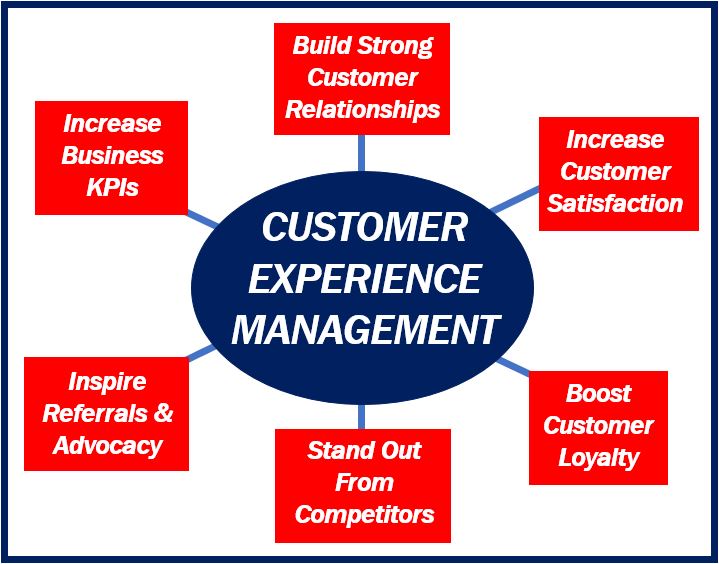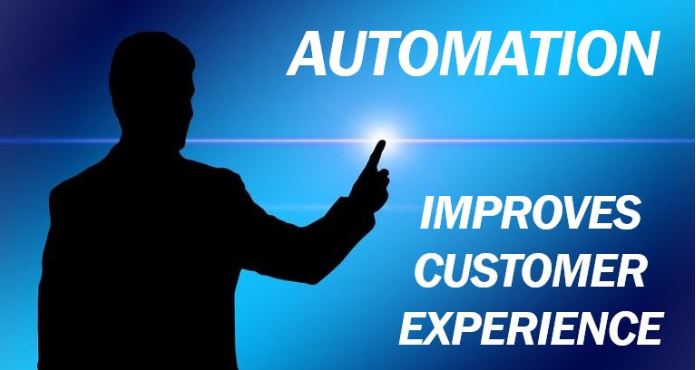The term Customer Experience has become increasingly popular in the media and business circles, especially in retail, over the past few years. Although most of us understand it, explaining what it means is not easy.
 Customer experience or CX refers to how customers feel or perceive the whole series of encounters when they buy goods or services or interact with a company. They are more likely to return if their impression or perception of the seller, brand, or product/service is a good one.
Customer experience or CX refers to how customers feel or perceive the whole series of encounters when they buy goods or services or interact with a company. They are more likely to return if their impression or perception of the seller, brand, or product/service is a good one.
Digital transformation initiatives are increasingly pivotal in enriching customer experience, as they leverage data analytics and online platforms to personalize and enhance the customer journey.
A company that manages to create exceptional customer experiences is more likely to compete successfully in the marketplace.
Customer experience – the total journey
People may use the term when referring to just one experience with one company or all of them, i.e., all the interactions with that business and perceptions about it. The latter meaning is more common. Most dictionaries say it includes the sum of all experiences (not just one).
Webopedia.com defines the term in the following way:
“Customer experience is the phrase used to describe the relationship a customer has with a business.”
“Customer experience refers to the total of all experiences the customer has with the business, based on all interactions and thoughts about the business.”
Put simply, it is the total journey of your interactions with a brand.
Customer experience vs. customer service
 The two terms might seem similar, but their meanings are completely difference. You should not use them interchangeably.
The two terms might seem similar, but their meanings are completely difference. You should not use them interchangeably.
Customer service
Customer service includes all the interactions between a company and its customers. However, in this case, the focus is on what the company does, i.e., how well it treats or looks after the customer before, during, and after a sale.
In a Market Business News article about customer service, we made the following comment:
“Customer service is crucial for good customer loyalty. It ensures customer satisfaction and encourages repeat purchases. It also adds value to a product or service.”
Customer experience
In this case, the term refers to everything that happened and is happening from the customer’s point of view. It focuses on all the interactions the customer has had with the seller and their perceptions, i.e., whether they thought the experiences were good, satisfactory, or bad.
How we feel when we first walk into a store is also part of customer experience. So are the interactions we have with the salespeople, how helpful (or not) they were, whether paying was easy, etc.
Customers’ perceptions of the seller can continue long after the sale. Perhaps they want to report a fault in the product they bought or just need some information about it. How easy it was to contact the seller and how helpful they were are also important components of the whole experience.
The sum of all contacts
In an article in Forbes magazine, Blake Morgan wrote:
“Customer experience is the sum of all contact, from first discovering and researching a product to shopping and purchasing to actually using the product and following up with the brand afterwards.”
“Customer experience measures how customers feel about a company overall and includes the emotional, physical, psychological connection customers have with a brand.”
Client or customer loyalty
Nearly three-quarters of customers who stop buying from a seller do so because of bad customer experience. Without it, customer loyalty is impossible.
Customer loyalty or client loyalty is the likelihood that existing customers continue coming back. If 70% of Company A’s customers come back for more compared to 50% of Company B’s, customer loyalty is stronger in Company A.
CEM or CXM
 Customer Experience Management, CEM, or CXM is the management of interactions that the customer has with the seller. CEM professionals work for or on behalf of sellers. Their aim is to optimize customer experience and customer loyalty.
Customer Experience Management, CEM, or CXM is the management of interactions that the customer has with the seller. CEM professionals work for or on behalf of sellers. Their aim is to optimize customer experience and customer loyalty.
People who specialize in CEM track, supervise, and organize all interactions between customers and the seller so that it can focus on customer needs.
Today, there is software that can help CEM professionals achieve their goals and objectives.
Econsultancy.com makes the following comment regarding CEM software:
“CEM software can be also used to automatically collect and analyse customer feedback. A good CEM system should deliver customer insights with full access to analytics, reporting options, and integration with your existing customer relationship management software.”
Robotic Process Automation
Thanks to new technology such as AI, robotic process automation or RAP is rapidly becoming the driver of customer experience. AI stands for artificial intelligence.
 In a previous Market Business News article, we wrote the following regarding RPA:
In a previous Market Business News article, we wrote the following regarding RPA:
“RPA helps enterprises transcend from ‘Deterministic Automation’ to ‘Intelligent Automation’ and to ultimately ‘Human-empowered Automation’.”
Modern companies are forever updating or rethinking their business models, how they function, and their marketing, sales, and post-sales approaches. Customer needs change, sometimes rapidly, and businesses need to adapt to those changes effectively and promptly.
Large corporations that can afford it have the option of buying hi-tech companies. That is, in their quest for a better and more personalized customer experience. McDonald’s, for example, acquired the Israeli AI startup Dynamic Yield in 2019.
Such acquisitions not only enhance customer interaction but also streamline operational efficiency, enabling businesses to respond more swiftly to evolving market trends.
The American multinational fast-food giant is using Dynamic’s decision logic and personalization technology to upgrade its outdoor displays for Drive Thru customers. The displays will show meals and ingredients based on trending menu items, current customer traffic, time of day, and the weather.
Other compound phrases incorporating “customer”
The term “customer experience” is a compound phrase, that is, a term consisting of at least two words. Marketing professionals frequently employ a variety of compound phrases in addition to “customer experience” when they are analyzing customer behavior. Let’s have a look at some of these:
The measurement of how a company’s products or services meet or surpass customer expectations.
For example: “Our goal is to improve customer satisfaction by addressing feedback promptly.”
-
Customer Engagement
The emotional connection between a customer and a brand, often resulting from interactions with the company’s products, services, or employees.
For example: “Through social media, we have increased our customer engagement significantly this quarter.”
The likelihood that a customer will continue to purchase from a specific brand or company over time.
For example: “Our reward program has been a great success in boosting customer loyalty.”
The assistance and advice provided by a company to those people who buy or use its products or services.
For example: “We pride ourselves on providing excellent customer service around the clock.”
-
Customer Retention
The activities and actions companies and organizations take to reduce the number of customer defections.
For example: “Our latest customer retention strategies have resulted in a lower turnover rate.”
-
Customer Insights
The understanding and interpretation of customer data, behaviors, and feedback to improve product development and marketing strategies.
For example: “The latest survey has provided valuable customer insights into the most desired product features.”
Video – What is Customer Experience?
